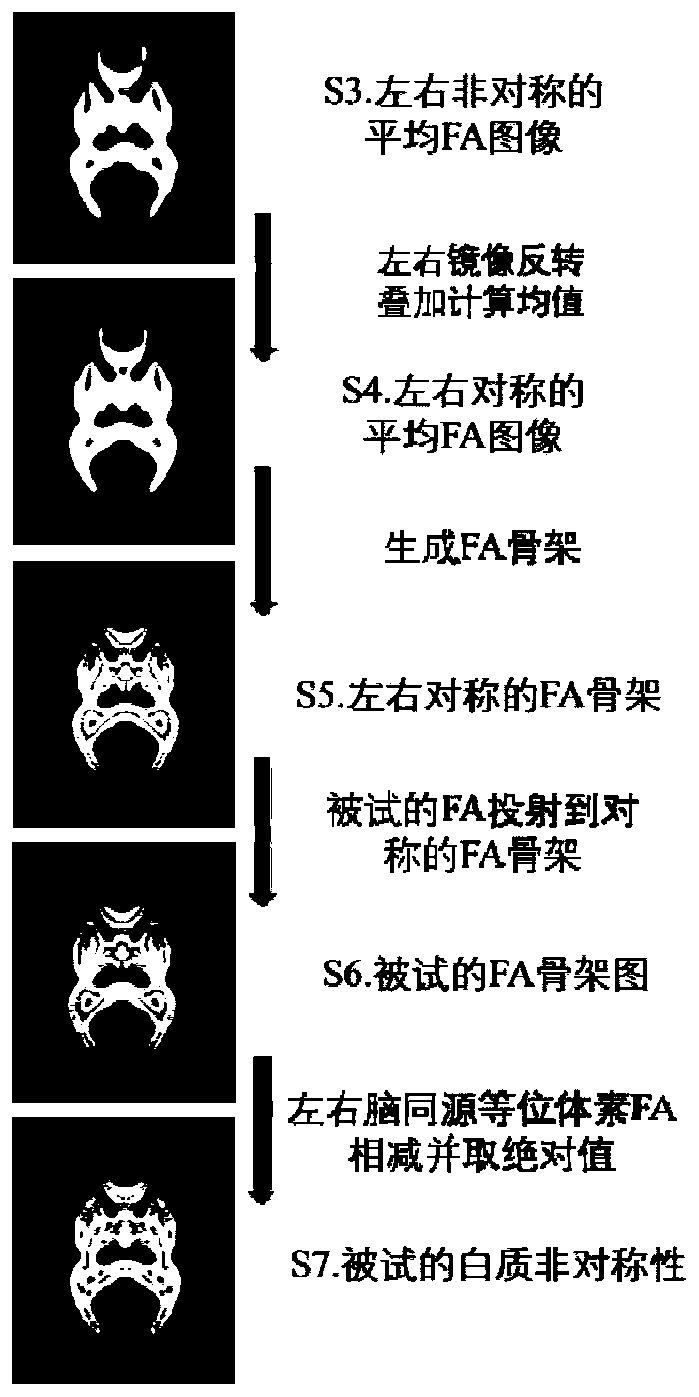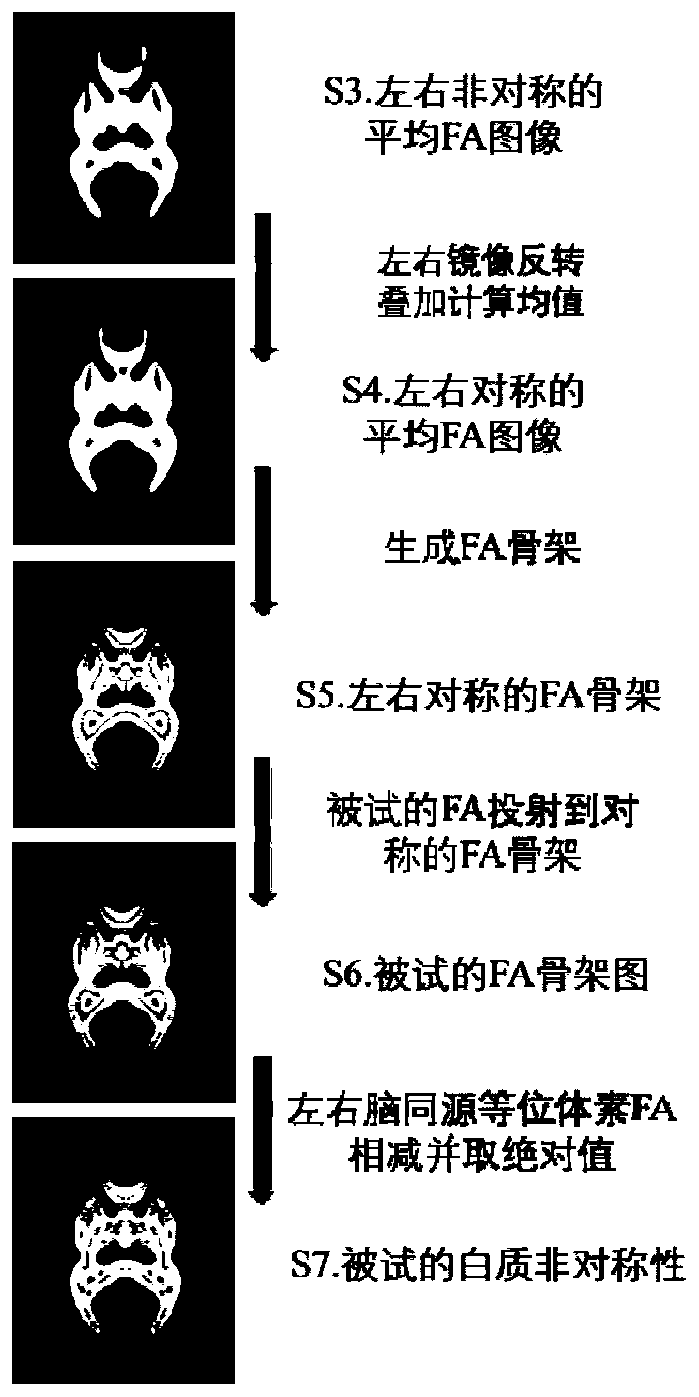Newborn brain development quantitative analysis method based on magnetic resonance diffusion tensor brain image
A technology of diffusion tensor and quantitative analysis, applied in image analysis, image enhancement, image data processing, etc., can solve the problem of FA reduction and achieve good understanding and quantitative analysis, good statistical significance and reliability
- Summary
- Abstract
- Description
- Claims
- Application Information
AI Technical Summary
Problems solved by technology
Method used
Image
Examples
Embodiment Construction
[0031] The present invention will be further described in detail below in conjunction with the accompanying drawings and the embodiments of the present invention.
[0032] figure 1 It is a schematic flowchart of a method for quantitative analysis of neonatal brain development based on magnetic resonance diffusion tensor brain images according to an embodiment of the present invention. The present invention performs quantitative calculation based on the white matter asymmetry of the DTI image to quantitatively analyze the brain development status of newborns
[0033] Such as figure 1 As shown, the method for quantitative analysis of neonatal brain development includes the following steps:
[0034] Step 11: A step of preprocessing the neonatal DTI image. Includes data format conversion, image correction, and brain tissue extraction. Specifically include:
[0035] Step 111: convert the raw data generated by the magnetic resonance equipment into DICOM format, and first conver...
PUM
 Login to View More
Login to View More Abstract
Description
Claims
Application Information
 Login to View More
Login to View More - R&D
- Intellectual Property
- Life Sciences
- Materials
- Tech Scout
- Unparalleled Data Quality
- Higher Quality Content
- 60% Fewer Hallucinations
Browse by: Latest US Patents, China's latest patents, Technical Efficacy Thesaurus, Application Domain, Technology Topic, Popular Technical Reports.
© 2025 PatSnap. All rights reserved.Legal|Privacy policy|Modern Slavery Act Transparency Statement|Sitemap|About US| Contact US: help@patsnap.com



